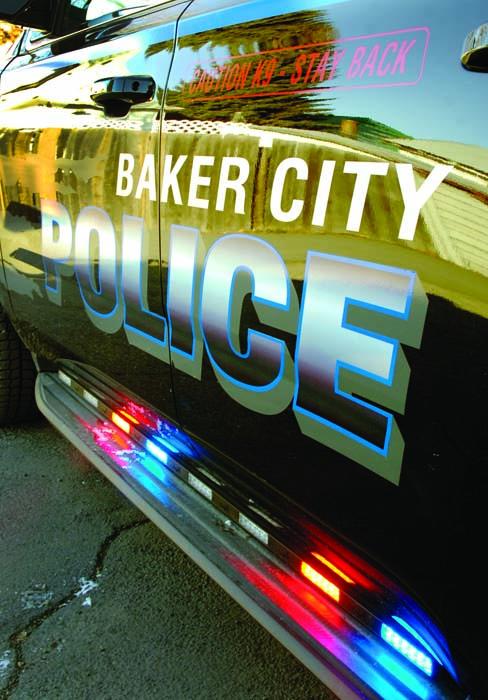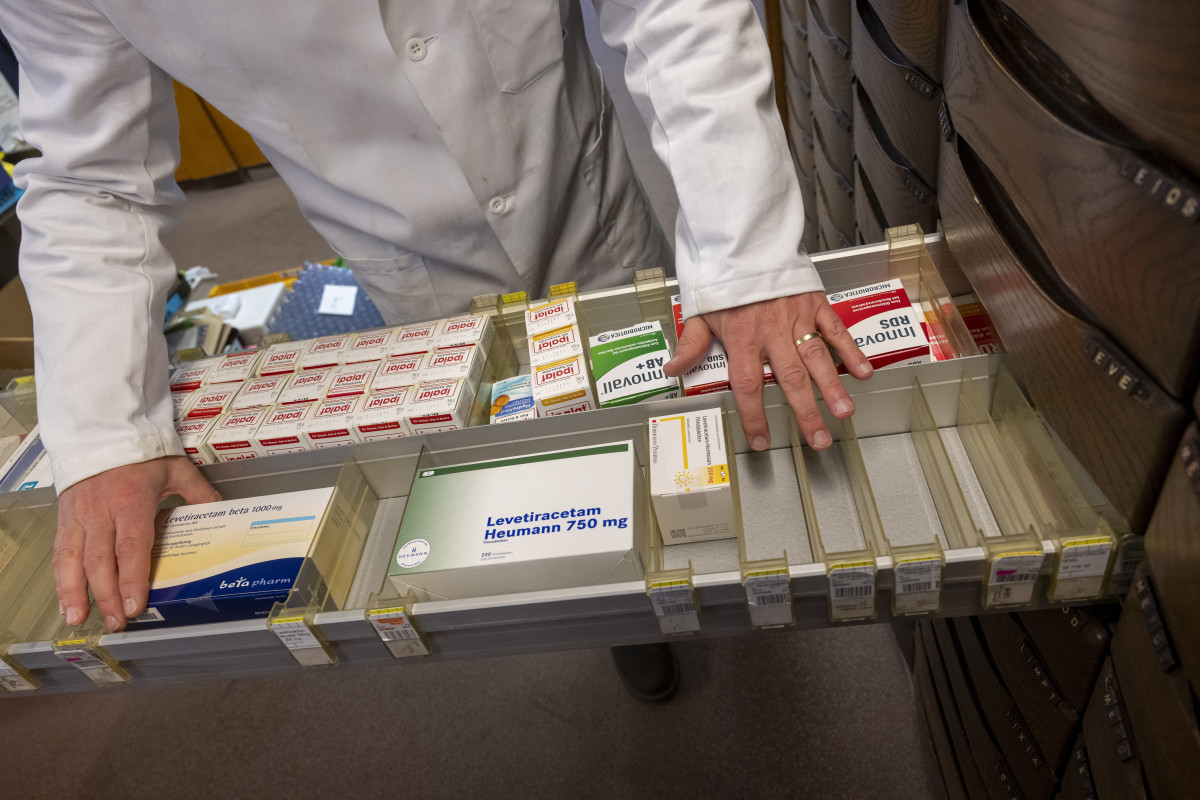District happy with student progress
Published 12:00 am Friday, November 16, 2001
By CHRIS COLLINS
Trending
Of the Baker City Herald
Most Baker School District students are ahead of their counterparts statewide in benchmark standards testing, according to administrators.
Im pleased with where Baker is as a district, said Don Ulrey, the 5J district curriculum and personnel director. Overall the citizens of Baker should be pleased with the progress students are making.
Trending
Ulrey praised the efforts of the district staff and parents in helping students meet state benchmarks, as required by school reform laws enacted in 1995.
This is the good news that the community should focus on despite other difficulties that have plagued the district, Ulrey maintains.
State standards tests are administered to students in Grades 3, 5, 8 and 10. Students in those grades are tested in reading/literature and mathematics; those in Grades 5, 8 and 10 also are tested in writing and mathematics problem solving; and only students in Grades 8 and 10 were tested in science last spring.
We are very encouraged by the results, Ulrey said. To be there (at benchmarks) or above I think is outstanding for a district of this size.
The gains at the third and fifth grade are phenomenal. Not very many districts can claim that, he added.
Northwest Achievement Levels Tests also are administered to Baker students in Grades 4, 6, 7 and 9. Those students also are meeting or exceeding the state averages in most cases, he said.
Students showed significant overall improvement in reading and mathematics at all levels except one in reading, Ulrey said.
Reading
Ninety-one percent of all Baker third-graders met reading benchmark standards, compared with 84 percent statewide. And 84 percent of Bakers fifth-graders met state reading standards, compared with 77 percent across the state.
Eighth-graders did not show as much improvement in reading as was expected, however, Ulrey noted. Baker students were slightly behind the statewide average of 62 percent with 61 percent meeting reading benchmark standards.
Ulrey said the lower scores might be attributed to the transitions students are experiencing in middle school. Another explanation could be that these students have only been in the standards-based program for six of their nine school years, he said.
The middle school site council will be addressing the issue through its school improvement plan, Ulrey said.
Fifty-four percent of Bakers 10th graders met or exceeded state reading benchmark standards, compared with 52 percent statewide.
Math
Baker third- and fifth-graders also topped statewide averages significantly in math, Ulrey said. Eighty-four percent of all Baker third-graders met or exceeded math benchmarks. Statewide, 75 percent of third-graders met standards.
Eighty-seven percent of the districts fifth-graders met standards in math assessments, beating the statewide average by 14 percent.
Scores were not as high in the area of math problem solving, where 73 percent of all Baker fifth-graders met the benchmarks compared with the statewide average of 76 percent.
At the eighth-grade level, 57 percent of Bakers students met standards in both areas of math. Statewide, 55 percent met standards in the multiple-choice mathematics testing and 58 percent met standards in the problem-solving assessment.
Forty-four percent of Bakers 10th-graders met math standards, compared with 42 percent statewide. In the problem-solving assessment, 54 percent of Bakers 10th-graders met or exceeded the standards, compared with 57 percent statewide.
Writing
Writing assessments found 67 percent of the districts third-graders meeting standards, 72 percent of the eighth-graders and 83 percent of the 10th-graders. Statewide averages were 65 percent, 68 percent and 79 percent respectively.
Sixty-four percent of Bakers eighth-graders met the science benchmarks compared with 60 percent statewide and 60 percent of the 10th-graders met standards compared with the statewide average of 58 percent.
Results shared in presentations
This fall Ulrey has met with staff, site councils and parent organizations to present the test results. And while he is proud of the 2001 results, Ulrey points to the long-term progress each class has made as the real proof that Baker students are continuing to excel.
One point in time should not be the only indicator, he says. This is just one snapshot. Assessment needs to be going on daily.
Tracking of the Class of 2003, this years juniors who took the 10th-grade assessments last spring, shows that they have made steady increases and on average met or exceeded state benchmark reading scores in all but their sixth- and seventh-grade years. Math scores also show a steady rise. On average, state math benchmarks were met or exceeded by the BHS junior class in all but their 10th-grade year.
As third-graders, the class scored an average of 206 in reading compared with the benchmark score of 202; as fourth-graders, they scored 211 compared to the benchmark of 208; fifth-grade, 219, with a benchmark level of 215; sixth-grade, 220, just slightly below the 221 benchmark score; seventh-grade, 223, compared with the benchmark of 226; eighth-grade, 234, up from the benchmark of 231; ninth grade, 238 with a benchmark of 236; and 241 as 10th-graders compared with the benchmark score of 239.
In math the class scores averaged 202 to match the state benchmark as third-graders. In fourth grade their scores rose to 213 compared with the benchmark of 208. The next year they scored 216 in math to outdo the state benchmark of 215.
As fifth-graders, the students scored 216 with a benchmark of 215. And as sixth-graders, the students scores averaged 223 compared to a 221 state benchmark score.
Their seventh-grade scores rose to 232 compared with the state benchmark of 226. The next year the students scored an average of 233, up two points from the benchmark of 231. In ninth-grade, the same students math scores topped the benchmark 245 to 236. The average of the students 10th-grade scores were down 237 compared with the state benchmark score of 239.
This years sixth-graders, the Class of 2008, show an even more dramatic increase in reading scores, averaging 213 compared with the state benchmark of 202 as third-graders, 216 compared with the benchmark of 208 as fourth-graders and 223 compared with the benchmark score of 215 as fifth-graders. Math scores followed a similar progression, with the Baker students scoring 208 as third-graders, 211 as fourth-graders and 223 as fifth-graders, with the same benchmark levels.
Ulrey said parents can help students by getting to know as much as possible about the new standards and learning what is expected of their children.
More information is available on several websites including: www.open.k12.or.us, which provides test samples and www.ode.state.or.us, which provides test results from each school in the district.
Ulrey said the district has used money obtained in a Goals 2000 grant to help staff improve their teaching skills in the area of reading and writing. Baker and Union counties received a $180,000 federal grant for that purpose, he said.
Two facilitators have been trained in each building in the Baker School District. They in turn will train other staff members to help bolster test scores in those areas.
The district also is applying for another grant aimed at improving math scores, especially on the problem-solving tests.
Staff development is always a key, Ulrey said.
Spring testing is set for two windows of time: March 16 through April 20 or April 27 through May 11.
Parents who want more information about their childrens test results should call the individual schools and talk with the building principals or the childs teacher, Ulrey said.









